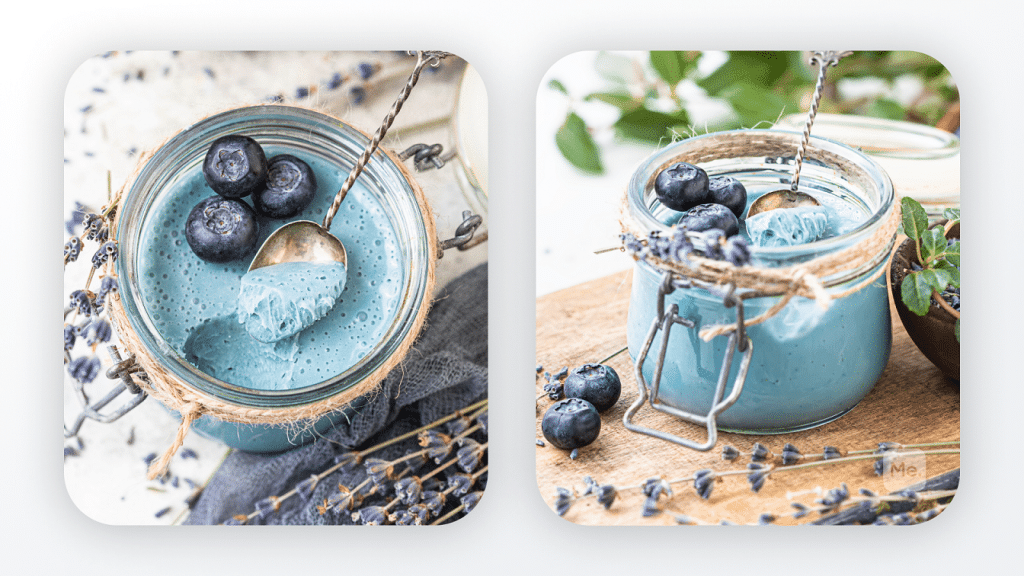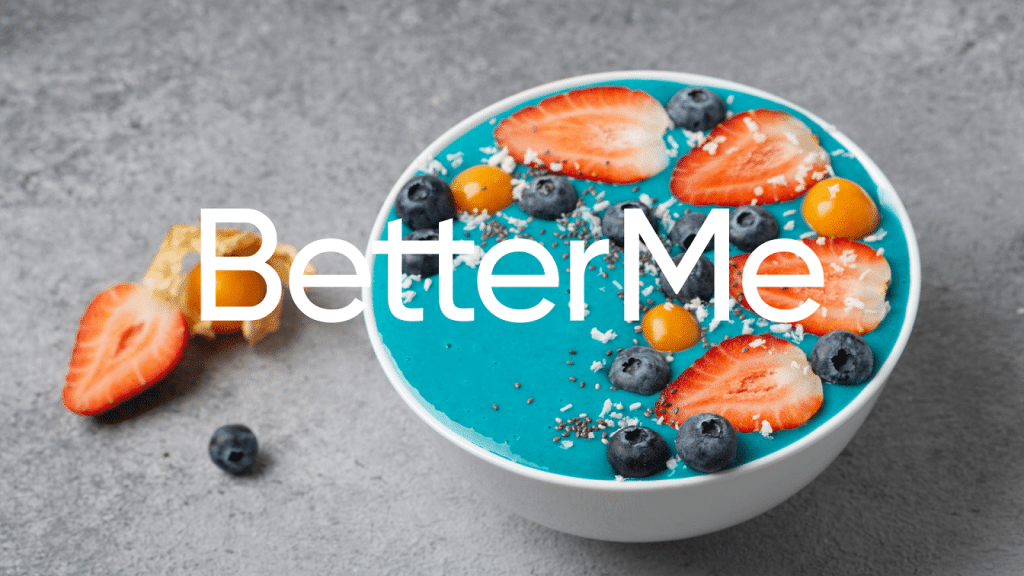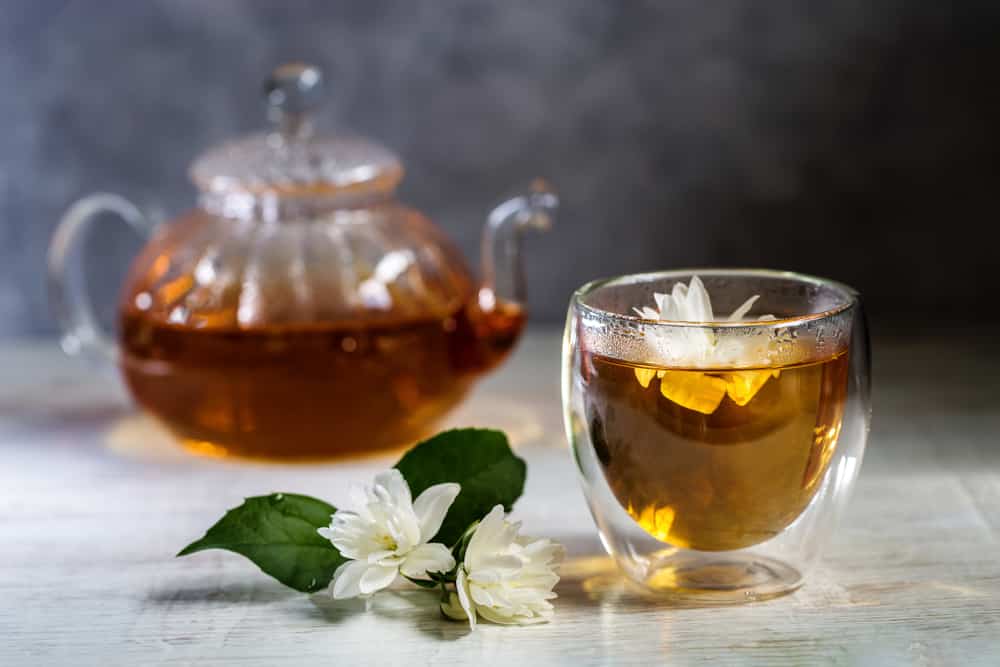Algae might not sound like the most appetizing food group, but blue spirulina could make you a believer. This extraterrestrial-like food is rich in protein and nutrients – plus it has a very cool color!
What Is Blue Spirulina?
“Spirulina” is actually the name of a genus of blue-green algae that belongs to the phylum cyanobacteria. This microorganism is about 2 to 4 micrometers wide and has a cylindrical shape. It is spiral-shaped, which is where blue spirulina got its name.
Difference Between Blue And Green Spirulina
Green spirulina is also a form of algae, but it is actually a species within the Arthrospira genus. This species thrives in warm climates and higher temperatures. Meanwhile, blue spirulina lives in colder waters and prefers colder temperatures.
Blue Spirulina Nutrition Facts
It’s impossible to talk about blue spirulina without mentioning its nutritional benefits. A single tablespoon (7 grams) of dried spirulina powder contains (7):
- Calories: 20
- Digestible carbs: 1.7 grams
- Protein: 4 grams
- Vitamin B1 (thiamine): 11% of the RDA
- Vitamin B2 (riboflavin): 15% of the RDA
- Vitamin B3 (niacin): 4% of the RDA
- Copper: 21% of the RDA
- Iron: 11% of the RDA
It also contains decent amounts of magnesium, potassium, and manganese, and small amounts of many other nutrients that you need.
Benefits Of Blue Spirulina
Blue spirulina is loaded with various nutrients and antioxidants that may benefit your body. Some of the blue spirulina health benefits include:
Powerful Antioxidant And Anti-Inflammatory Properties
Oxidative damage and chronic inflammation is associated with many diseases and health conditions, including obesity, heart disease, diabetes, arthritis, and even cancer. Eating foods that fight these processes may help prevent the development or progression of these conditions (8).
Blue spirulina contains high concentrations of powerful antioxidants such as phycocyanin and chlorophyll. These two substances have been shown to have powerful antioxidant and anti-inflammatory effects (8).
Can Lower “Bad” LDL And Triglyceride Levels
Heart disease is the number one cause of death in the United States. One of the major risk factors for heart disease is high LDL cholesterol levels and low HDL cholesterol levels. Spirulina contains compounds that have been shown to help lower total cholesterol, LDL cholesterol, and triglycerides while increasing HDL levels (8).
Blue spirulina may also fight atherosclerosis by reducing oxidative stress and reducing inflammatory markers (8).
Can Help You Lose Weight
People have been using spirulina for weight loss. It’s not exactly clear why spirulina has this effect, but it may be due to its high fiber content. Fiber can help you feel full for longer periods of time, making it easier to stick with a sensible eating plan (5).
Read More: B12 Foods Vegetarian: What To Eat To Prevent Deficiency
Can Improve Digestion And Gut Health
With about 20 percent of your immune system in your digestive tract, it’s no wonder that certain foods can have a big impact on your immune function and health. Spirulina has been shown in animals to improve the composition of gut bacteria (10).
The blue-green color of spirulina is a good indication that it contains high concentrations of phycocyanin, which may help improve the health and function of the cells in the intestinal lining. This could potentially help you fight digestive problems such as bloating, constipation, and diarrhea (10).
Can Help Fight Infections And Diseases
Blue spirulina contains compounds such as phycocyanin, phycocyanin, and polysaccharides that may help fight infection. These compounds may also work against specific types of cancer cells, such as those found in the prostate or breast. The immune-modulating effects of blue spirulina may also contribute to the prevention and treatment of other illnesses (8).
May Have Anti-Cancer Properties
Early studies have shown that spirulina may help prevent and fight cancer, particularly when used alongside chemotherapy. It’s believed that this might be due to its ability to protect tissues from oxidative damage while simultaneously promoting the regeneration of new cells (8).
May Reduce Blood Pressure
High blood pressure is a major risk factor for many diseases and health conditions, such as heart disease and stroke. A few studies suggest that spirulina may be able to lower blood pressure by improving your circulation and reducing inflammation. Increased production of nitric oxide may also help lower blood pressure by widening blood vessels and improving the function of your heart (4).
Improves Symptoms Of Allergic Rhinitis
Allergic rhinitis, also called hay fever, is a common condition that can cause many annoying symptoms, such as sneezing and sniffling. Some studies suggest that spirulina may be able to reduce the severity of these symptoms because of its anti-inflammatory effects. This supplement may be especially beneficial for people who experience allergic reactions due to pollen exposure (11).
May Help Keep Your Eyes Healthy
Eyesight is one of the most important aspects of your overall health. Unfortunately, many people experience vision problems as they get older. Blue spirulina may help protect against these problems by fighting oxidative stress and reducing inflammation, which can damage your eyes (9).
May Be Effective Against Anemia
The most common form of anemia is due to a lack of iron. Spirulina is rich in the mineral iron, which your body needs to make hemoglobin and red blood cells. Consuming this as a supplement may help treat anemia by increasing the amount of nonheme iron in your diet, but is not a substitute for any medications or iron supplements recommended by your doctor (12).
May Improve Muscle Strength And Endurance
Exercise-induced oxidative damage is a major contributor to muscle fatigue. Luckily, spirulina may be able to help fight this damage by reducing oxidative stress and improving your strength and endurance. By decreasing the amount of free radicals in your system, spirulina is said to have the potential to help reduce muscle soreness after exercise.
May Boost Your Energy Levels
There are many factors that contribute to fatigue, such as lack of sleep, anemia, an underactive thyroid, poor diet, and stress. Spirulina appears to have anti-fatigue effects that can help fight these factors by boosting energy levels. It’s thought that spirulina may also improve the body’s ability to produce ATP by increasing the availability of oxygen in your cells (6).
Spirulina helps get rid of symptoms of the common cold, such as fatigue and irritability.
May Aid Blood Sugar Control
There are many factors that contribute to insulin resistance, which can lead to type 2 diabetes . Studies in animals have shown that spirulina may help decrease risk of developing diabetes by improving insulin secretion and sensitivity. It’s thought that this supplement increases the production of adiponectin, a hormone that plays a role in blood sugar regulation (2).
If you wish to cinch your waist, tone up your bat wings, blast away the muffin top – our fitness app was created to cater to all your needs! BetterMe won’t give excess weight a chance!
Blue Spirulina Side Effects
Spirulina is generally very safe to consume in average recommended food amounts: usually a few tablespoons each day.
Exceeding these limits could mean overdosing on specific vitamins and minerals which come with their own sets of negative side effects.
Before you start taking blue spirulina supplements or foods that contain the ingredient, it’s important to consider any possible side effects. They include:
Blue Spirulina Pregnancy And Breastfeeding
Spirulina is generally regarded as safe for people who aren’t pregnant. It’s important to note that not enough research has been conducted on the safety of spirulina when pregnant or breastfeeding. There is fear that it could be contaminated with heavy metals such as mercury, which can be dangerous to a developing baby. Avoid taking it if you’re pregnant or breastfeeding unless your doctor recommends otherwise.
May Cause Allergies
Spirulina is a type of blue-green algae. Because it’s a natural food source, some people assume that spirulina is entirely safe to eat. However, allergies to blue-green algae can cause serious reactions in sensitive individuals. If you’re allergic to algae, it’s important to avoid foods like spirulina. It may cause itching, swelling, shortness of breath, and nausea (1).
If you experience these or any other reactions after eating spirulina or similar supplements, stop use immediately and speak with your doctor. Your allergist can run tests to find out what specifically you’re allergic to so that you can avoid it in the future.
Blue Spirulina General Interaction
There aren’t any known drug or supplement interactions associated with spirulina. However, it is always a good idea to speak with your doctor before taking this supplement.
Read More: 1-Day Detox Guide To Kick-Start A Healthy Lifestyle
How To Use Spirulina
There are several ways to incorporate blue spirulina into your diet. They include:
In A Smoothie Bowl
Smoothie bowls are delicious, nutritious smoothie-like desserts made with fresh fruit and superfoods like spirulina. Simply blend together your favorite fruit (fresh or frozen), with plant-based milk, a handful of leafy greens, and a scoop or two of spirulina. If you want to add extra sweetness, fresh fruit like bananas works well. Top with granola, nuts, seeds, and additional fruit for an incredibly balanced treat.
In Soup
If you prefer your blue spirulina in soup form, it’s easy to make at home! Simply stir together your favorite soup stock or broth with mixed veggies, finely chopped fresh herbs (like cilantro or parsley), and a scoop of blue spirulina powder. Whisk until fully incorporated, then simmer to allow the flavors time to meld.
In Salad Dressing
If you’re looking for a way to add spirulina powder to your favorite salad dressing, simply blend together olive or avocado oil with Dijon mustard, fresh lemon juice a scoop of blue spirulina. If you prefer a thinner consistency, add more oil. Pour over any green leafy salad for an extra boost of nutrition.
In Baked Goods
Spirulina is a great way to add some extra nutrition into your favorite baked goods. Simply substitute in 2 tablespoons of spirulina powder for every 1 tablespoon called for in your recipe. If you want blue bread, cookies, or cakes, simply add liquid and more flour until the consistency you want is reached.
In Noodles And Pasta
Spirulina is great for adding a nutrient boost to your favorite cooked noodles and pasta dishes. Add it to your pasta sauce or sprinkle it over your cooked dish for an extra boost of vitamins and minerals.
BetterMe is your fast-track ticket to a long-lasting weight loss! Tailor your fitness journey and maximize your results with just a couple of swipes!
Blue Spirulina Precautions For Food Safety
Spirulina grows in ponds where it could be susceptible to runoff contamination and heavy metals. Spirulina harvested from natural sources could potentially contain contaminants like arsenic, mercury, and lead (3). It’s best if you can purchase spirulina supplements that have been tested for heavy metal content.
Make sure to check ingredient labels for added dyes, fillers, and flavorings to ensure that you’re getting an effective supplement.
The best blue spirulina is organic, free from any dyes, and harvested from a clean environment without heavy metal contaminants.
Final Thoughts
Blue spirulina is a rich source of protein, vitamins, and minerals. It is also rich in antioxidants and a number of other nutrients, including iron and calcium. However, it may not be safe during pregnancy or for those who have allergies. Because of this, it’s important to speak with your doctor before incorporating blue spirulina into your daily routine. As always, it’s best to avoid taking any supplements without first consulting a doctor or pharmacist.
Get your personalized
meal plan!
DISCLAIMER:
This article is intended for general informational purposes only and does not serve to address individual circumstances. It is not a substitute for professional advice or help and should not be relied on for making any kind of decision-making. Any action taken as a direct or indirect result of the information in this article is entirely at your own risk and is your sole responsibility.
BetterMe, its content staff, and its medical advisors accept no responsibility for inaccuracies, errors, misstatements, inconsistencies, or omissions and specifically disclaim any liability, loss or risk, personal, professional or otherwise, which may be incurred as a consequence, directly or indirectly, of the use and/or application of any content.
You should always seek the advice of your physician or other qualified health provider with any questions you may have regarding a medical condition or your specific situation. Never disregard professional medical advice or delay seeking it because of BetterMe content. If you suspect or think you may have a medical emergency, call your doctor.
SOURCES:
- Anaphylaxis to Spirulina confirmed by skin prick test with ingredients of Spirulina tablets (2014, researchgate.net)
- Antidiabetic potential of phycocyanin: effects on KKAy mice (2013, nih.gov)
- Blue-Green Algae (2021, medlineplus.gov)
- Effects of spirulina consumption on body weight, blood pressure, and endothelial function in overweight hypersensitive Caucasioans: a double-blind, placebo-controlled randomized trial (2016, pubmed.gov)
- Effects of spirulina on weight loss and blood lipids: a review (2020, nih.gov)
- Ergogenic and antioxidant effects of spirulina supplementation in humans (2010, pubmed.gov)
- Seaweed, spirulina, dried (2019, usda.gov)
- Spirulina in Clinical Practice: Evidence-Based Human Applications (2010, nih.gov)
- Spirulina is an effective dietary source of zeaxanthin to humans (2012, pubmed.gov)
- Spirulina platensis alleviates chronic inflammation with modulation of gut microbiota and intestinal permeability in rats fed a high-fat diet (2020, nih.gov)
- The effects of spirulina on allergic rhinitis (2008, pubmed.gov)
- The effects of Spirulina on anemia and immune function in senior citizens (2011, nih.gov)
- The Effects of Spirulina Supplementation on Redox Status and Performance Following a Muscle Damaging Protocol (2021, nih.gov)
- Vitamin B12 (2019, nih.gov)















